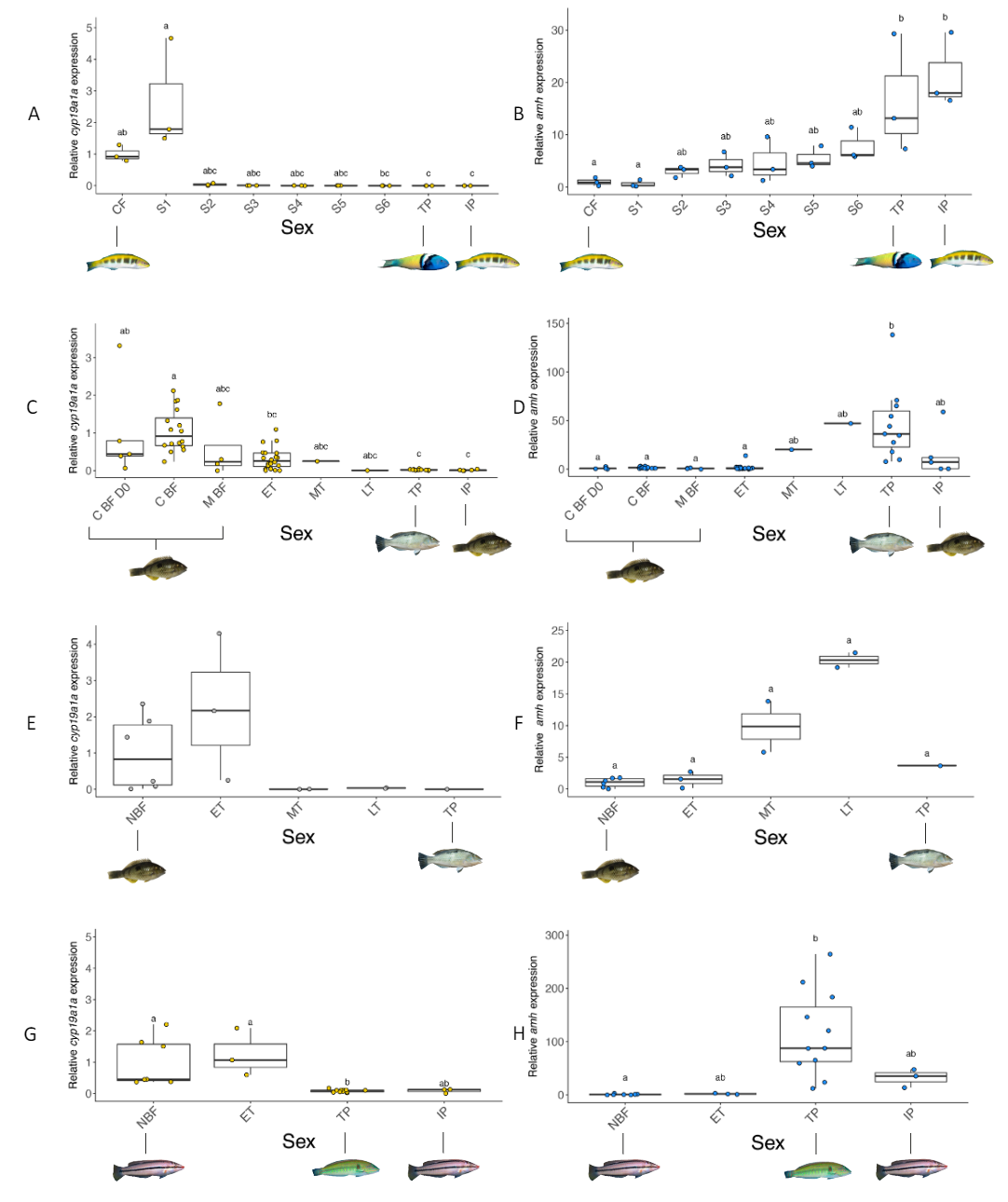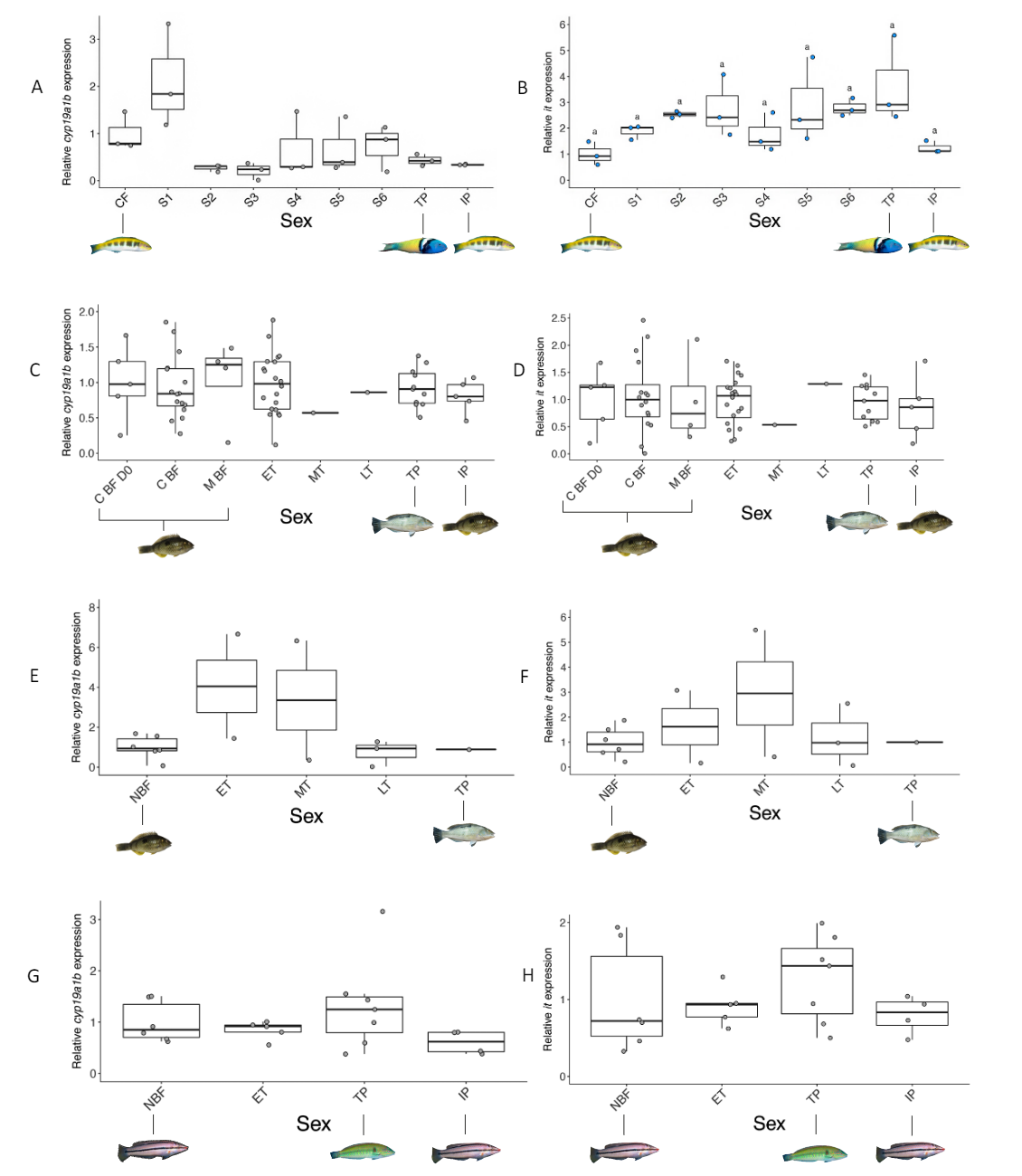Sex change in Wrasse: Gonads and Genetics
Wrasse are generally protogynous, which means they are typically born female and change sex to male. Each breeding territory is controlled by a single large male that mates with multiple small females. Sometimes fish develop as males (initial males), but resemble females in appearance and behavior. Thomas et al., (2019) sought to look at the regulation of a handful of genes across several species of wrasse at different stages of sex phenotypes. One reason for doing this study was to observe how some of these genes may be involved in coordinating sex change, but also to see how this regulation might differ between species. The investigators experimented on 4 groups: Wild bluehead wrasse, captive spotty wrasse, wild spotty wrasse, and wild Kyusen wrasse. RNA was extracted from gonads, reverse transcribed, and expression of certain genes was measured by qPCR.
There were 4 genes under scrutiny. cyp19a1a is a gene that encodes an aromatase in the gonads. Aromatases are enzymes that convert male androgens like testosterone into female sex hormones like estradiol. cyp19a1b is very similar to 1a, except that it encodes an enzyme that converts testosterone into estradiol in the brain. amh encodes antimullerian hormone, a hormone important for specifying male sex. it encodes isotocin, a homolog of the oxytocin gene expressed in mammals that is important for regulating sociosexual behaviors.


The researchers found that some of these genes were obviously being expressed differently in different phenotypes, but others were not changing in the way they anticipated. cyp19a1a as a gene important for maintaining the female phenotype decreased to negligible levels once individuals moved towards the male phenotype (Fig. 1 A, C, E, G). However the neural form, cyp19a1b, showed little change except briefly in bluehead wrasse (Fig. 2 A, C, E, G). This suggests that though cyp19a1a is important for regulating sex change, the 1b neural form does not masculinize the brain as thought. At least in the non-bluehead wrasses. amh also showed steadily increasing expression as individuals moved towards the male phenotype (Fig. 1 B, D, F, H), which demonstrates again that some of these canonical sex determination genes are being differentially leveraged to facilitate sequential hermaphroditism. Finally it showed little in the way of large-scale changes (Fig. 2 B, D, F, H), except maybe in bluehead wrasse again. This indicates that perhaps it is not one of the factors being manipulated socially to start the cascade of regulatory changes necessary for sex change. The results of this experiment give us some insight into how some of the sex determination pathways are being manipulated by sequential hermaphrodites, but still leaves unknown how social cues start this process in the first place.